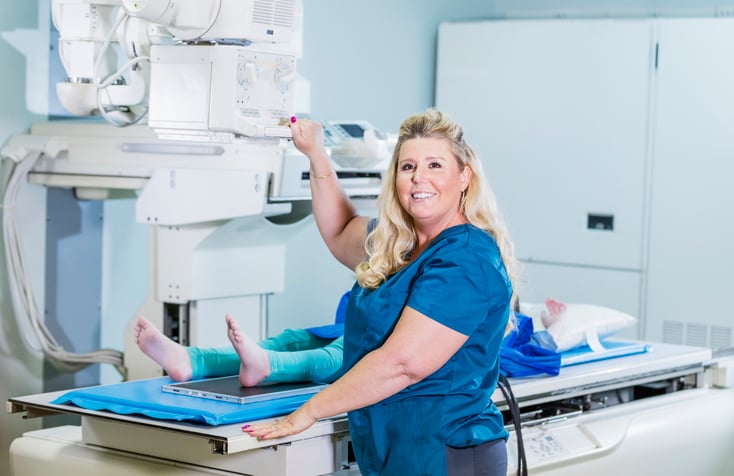
Demand for Physical Therapy Jobs on the Rise
Outlook for travel PT jobs and PTA jobs continues to grow
As demand continues to test the limits of the healthcare industry, professionals are working hard to address patients’ needs. Physical therapists (PTs) are a glaring example of one group experiencing a distinct shortage--ranging from about 9,385 current vacancies to 40,934 projected vacancies by 2020, according to the American Physical Therapy Association. This shortage translates to a positive employment outlook for jobseekers.
Along with increased health needs of an aging population, another reason for the growing shortage is the additional patients gaining health coverage under the Affordable Care Act. According to the 2014-15 Occupational Outlook Handbook, from the U.S. Bureau of Labor Statistics, employment of physical therapists is predicted to grow 36 percent between 2012 and 2022, while employment of physical therapist assistants (PTAs) and aides is expected to grow by 40 percent; both rates are "much faster" than the average growth rate for all occupations.
These factors indicate that PTs and PTAs alike--ranging from new grads to seasoned professionals--can enjoy a range of options when it comes to considering their next move in their allied health careers.
Where PT jobs and PTA jobs will grow

The BLS Handbook cited that opportunities for physical therapy jobs will be most promising in acute hospital, skilled-nursing facilities and orthopedic settings.
“In addition to these type of settings, we are noticing a big trend in home healthcare,” said Christina Miner, MBA, regional vice president for AMN Healthcare company specializing in allied health staffing. “There are shifts in the specialty areas for physical therapy jobs, and because of changes in reimbursements, many of these PTs are moving from the hospital and into home health.”
For these PTs considering home health, AMN Healthcare offers training through the Home Care Institute to bring them up to speed on the nuances of home care.
“When PTs work with their patients at a traditional hospital, they have access to all different types of equipment,” Miner said. “However, it may not be so practical once a patient comes back home to recover, so the PT has to become versed in teaching their patients how to adapt to their environment, for every scenario.”
“It allows for a better relationship between patient and therapist, as well as allowing for a more flexible work–life balance for the PT.”

Varied training through travel PT jobs
As the demand for physical therapy professionals increases, so will therapists’ and assistants’ desire for continuing education and training. Miner said that temporary travel assignments can allow these professionals to learn a wider variety of skills, which are transferable to other settings and jobs.
“Through the partnerships with our travelers, the feedback we get is they have an increased opportunity to work and learn across disciplines, while evolving and molding in different personal and professional settings,” Miner said. “Our PT travelers say they are challenging themselves on a daily basis, learning new techniques on patient care, and learning to be more well-rounded.”
What about salaries for travel physical therapist jobs and physical therapist assistant jobs? Many of these pay higher salaries than permanent positions, due to the current demand and the respective hiring facility.
“The great thing about physical therapists is you don’t have to be married to a certain specialty or focus, and you can really pursue your interests,” Miner said. “Many PTs have seen the firsthand benefits of therapy on themselves or others, which is another common motivator to stay curious for ongoing improvement within this high-demand market.”
AMN Healthcare is the staffing leader for allied health careers, offering more PT jobs and PTA jobs--as well as opportunities in other allied disciplines across the country. Find a current position or sign up for free job alerts today.
© 2016. AMN Healthcare, Inc. All Rights Reserved.
Latest News
SLP Month Spotlight: Meet Claudia B.
Celebrate National Speech-Language-Hearing Month by meeting Claudia B., an inspiring SLP who is improving lives. Explore SLP career growth with AMN Healthcare.
Work Hard, Scan Harder: Side Hustles for Imaging Pros
Discover top side hustles for imaging professionals, including teleradiology, teaching, and freelance writing. Earn extra income while growing your skills.
Echo, OB, Vascular: Which Sonography Specialty Pays the Most?
Compare pay in echo, OB, and vascular sonography. Find out which specialty suits you best and discover top sonography jobs with AMN Healthcare.
Which Imaging Modality Should You Specialize In? A Guide for New Techs
Explore job growth, salaries, and pros & cons of CT, MRI, Sonography & X-Ray. Find the best imaging career path for radiologic technologists today.
Top 5 CT Tech Certifications for Career Growth
Boost your career with these top CT tech certifications. Learn what’s essential for higher-paying CT tech jobs and how to stand out in the field.
SLP Month Spotlight: Meet Kaitlyn C.
Celebrate SLP Month with Kaitlyn C., an inspiring travel SLP blending patient care with adventure. Learn more about her story and SLP careers with AMN Healthcare.
Celebrating Speech-Language-Hearing Month 2025
Celebrate Speech-Language-Hearing Month with resources, tools & travel therapy jobs from AMN Healthcare. Empower communication & advance your career!
6 Surprising Places OTs Work Outside the Clinic
Discover 6 unique OT job settings beyond the clinic, from schools to rehab tech. Explore non-clinical occupational therapy career options with us today!










